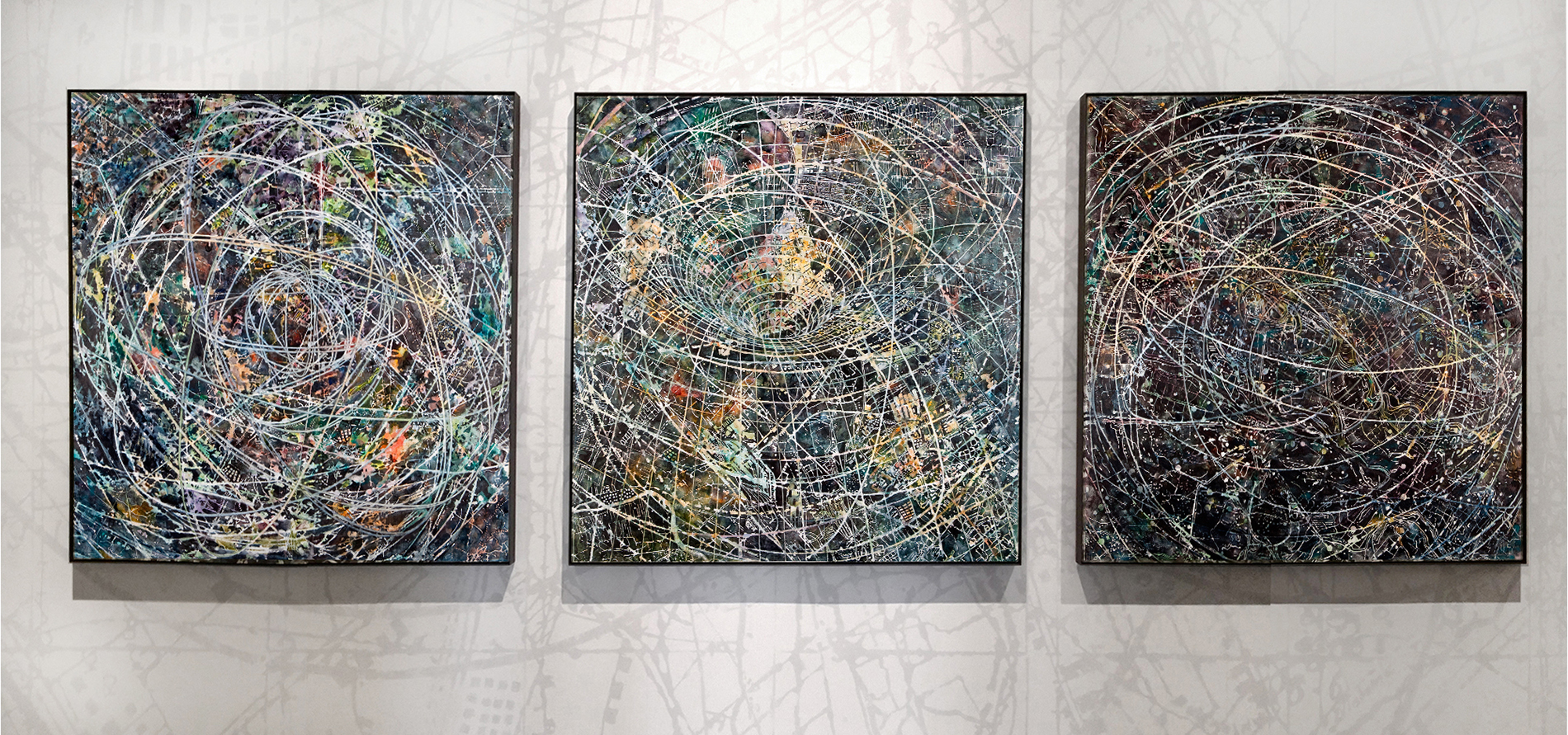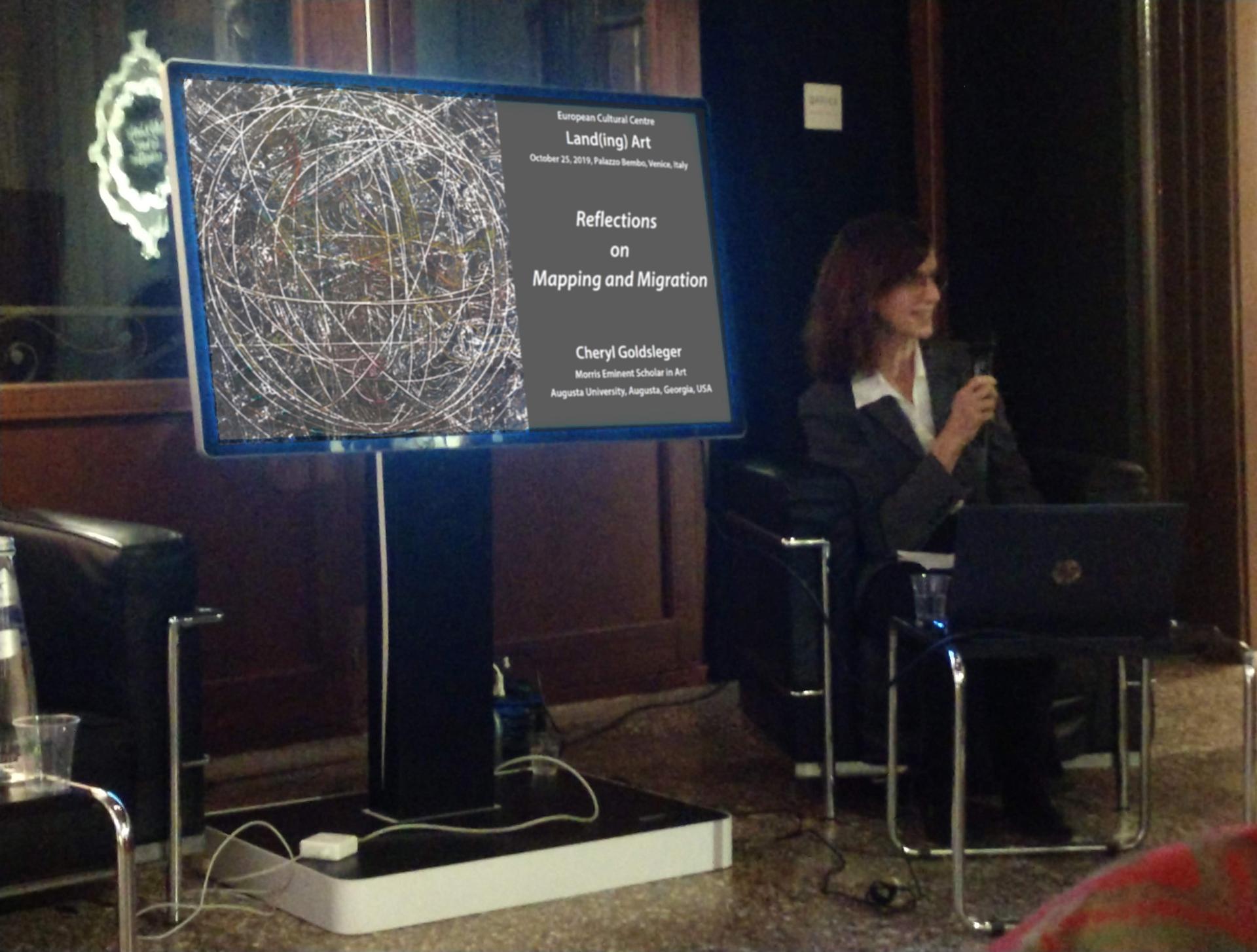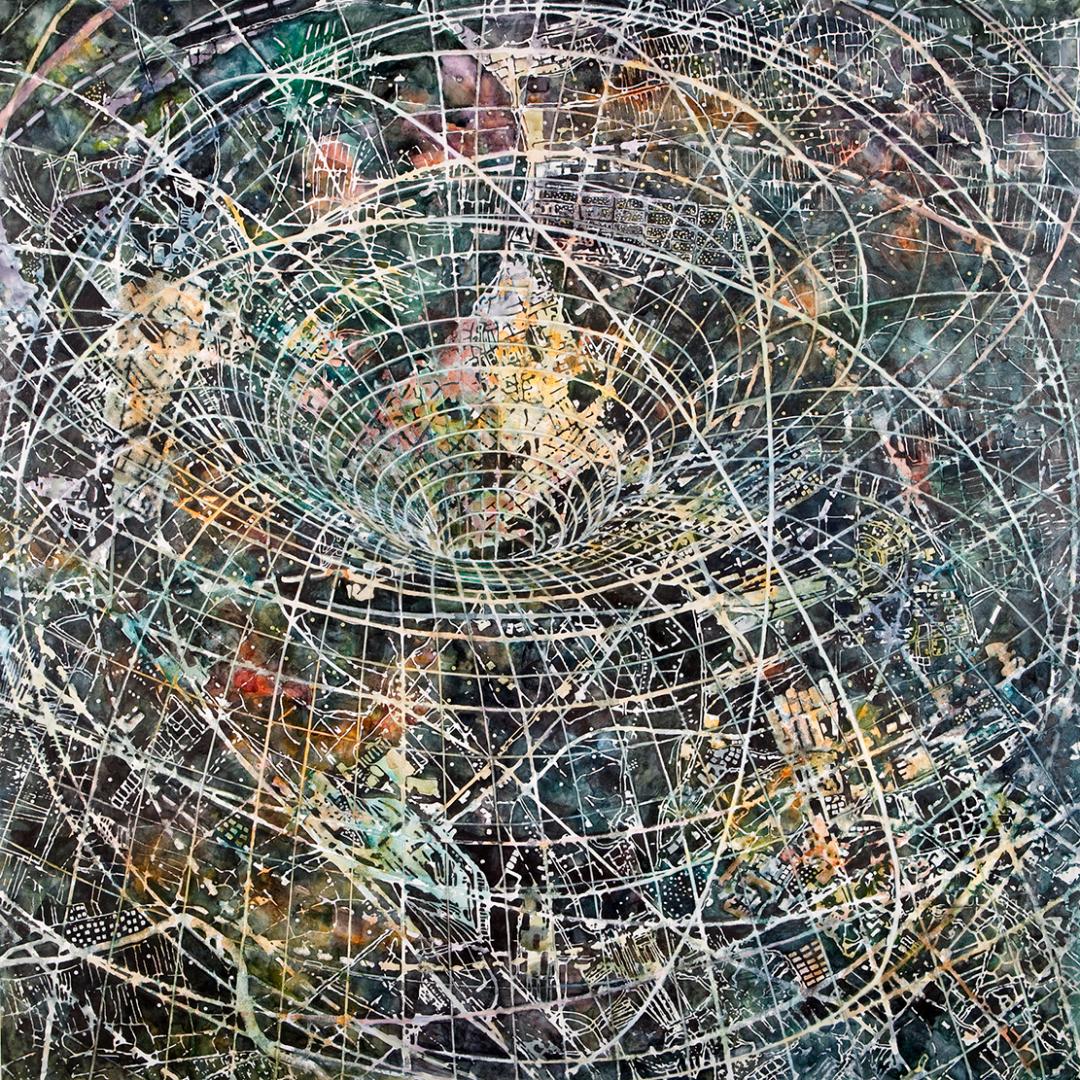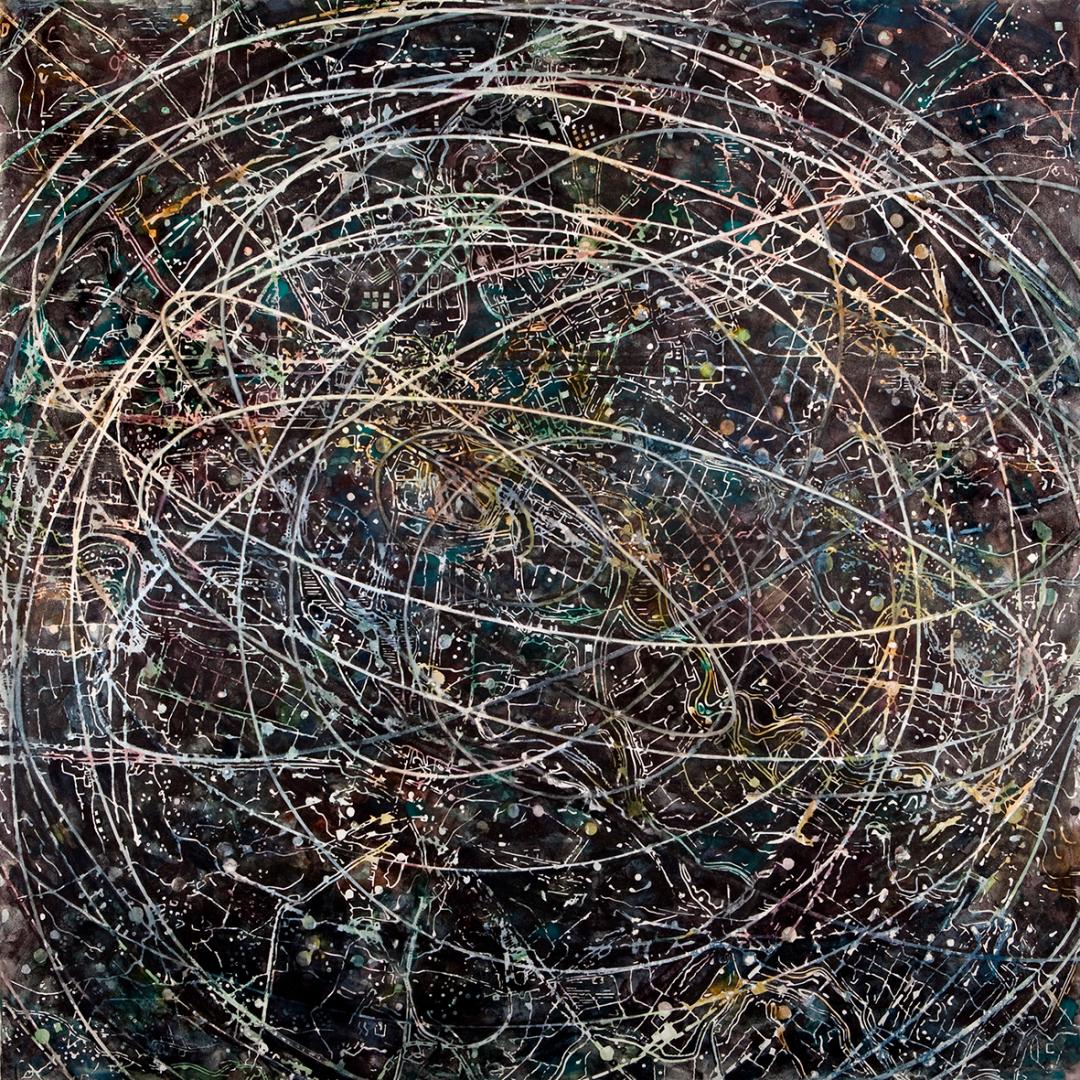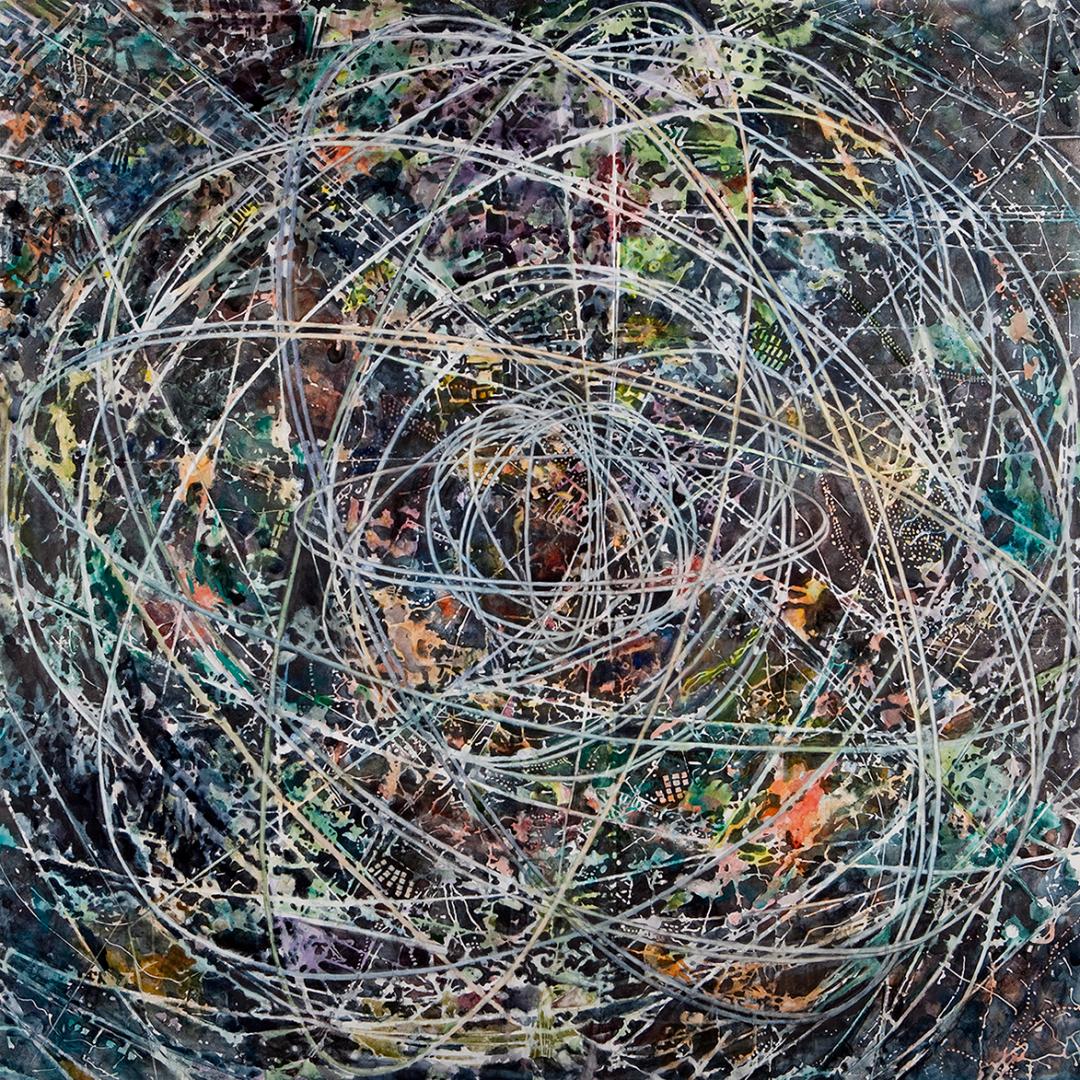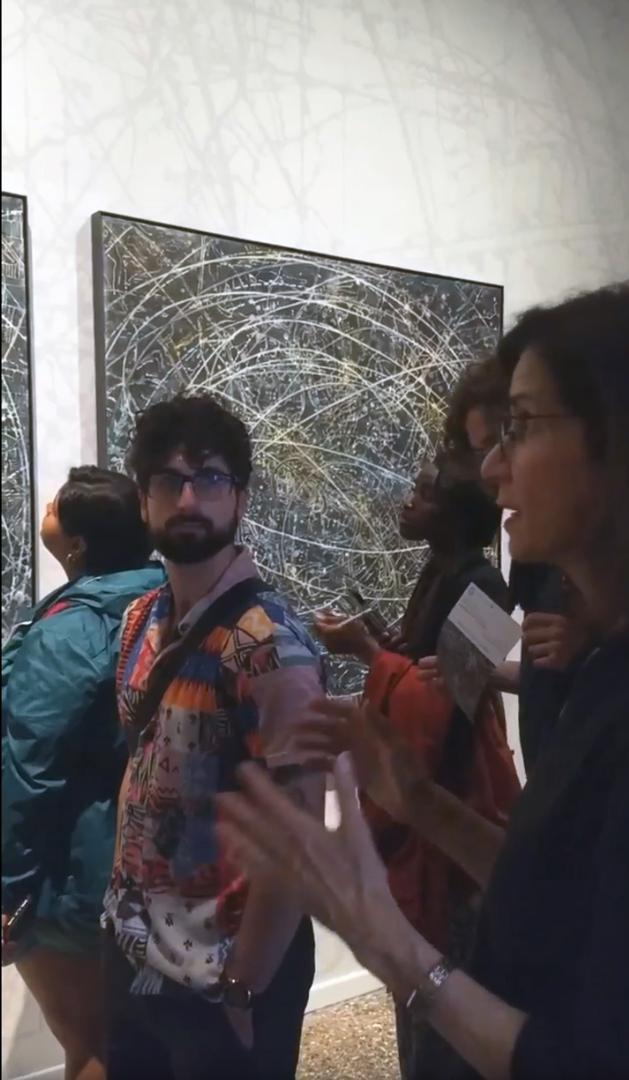Vast Scale—Intimate Space
Basic information
Project Title
Full project title
Category
Project Description
Goldsleger's painting exhibition challenges viewers to immerse themselves in places where environmental and socio-economic events occur, the effects of which are felt worldwide. Her art calls for sustainability and embraces "multiple interpretations while conveying her sensitivity for the human experience. Her diagrammatic images also suggest natural and societal orders and serve as a reminder of the transitory realities present within contemporary society." (Curator Shannon Morris)
Project Region
EU Programme or fund
Description of the project
Summary
"When a butterfly flutters its wings in one part of the world, it can eventually cause a hurricane in another." (Edward Lorenz, meteorologist). The artwork in my exhibition Vast Scale—Intimate Space hopes to immerse viewers visually in the atmosphere of places where environmental and socio-economic events unfold that lead to migration, the effects of which reverberate worldwide. By weaving into my paintings' compositions diagrammatic maps of a broad, international sampling of climate crisis locales, I attempt to address the ramifications of these situations impacting people's lives thus emphasizing the need for sustainability and solutions. The aftermath of these events is upheaval and migration, forcing people to leave their homes, their places of origin. Rather than portray the climate change disaster that initiates the need to migrate, I explore the relationship individuals and societies have with place and location using a universal, abstract visual language to portray the chaos and confusion, personal and global, that results from these circumstances. To do this, I use areas of intense color and radiating linear elements to create webs of connections and inclusion merged with perspectives that place viewers in unique vantage points to see the myriad forces at play upon the global landscape and its inhabitants. The exhibition included two public artist presentations and participation in Land(ing) Art, a panel presentation on environmental issues, art, and science. Through my work, I strive to underscore our implicit connectedness and create the empathy and understanding needed to move toward a sustainable world and avoid the chaotic ramifications of catastrophic events on all people in our increasingly smaller, interconnected global society
Key objectives for sustainability
The key objectives of my art are to motivate people toward sustainable living practices by showing how the effects of climate crises spread outward affecting people everywhere. Where one lives affects how one lives. The impact I hope my paintings have is to foster inclusion and change through empathy and understanding. By visually conveying in a palpable way the sense of upheaval and chaos migrants face due to environmental events, and often the socio-economic displacement that goes with it, my work strives to speak universally to the urgent need to regenerate urban and rural spaces that, due to climate and socio-political events, are becoming, or have already become, uninhabitable. Without naming specific events, I visually attempt to convey the trajectories of human movement away from the central locations of disasters, showing the radiating effects of climate change on surrounding regions and countries as people flee disasters. The premise of my artwork is that large-scale human migration due to the increased frequency of extreme weather events, resource scarcity, and other factors, particularly in developing countries, is already occurring and will continue to increase. Food, water, and resources in regions where they are scarce may lead to more conflicts and to widespread disease irrespective of national borders. Through an aesthetic experience and public presentations, my art strives to address these issues as universal concerns underscoring the need for sustainability and the regeneration of urban and rural areas that have been devastated by disasters. What can happen to an individual who experiences a climate catastrophe is life-changing. As climate crises, turmoil, and unrest make regions of the world unlivable, my objectives through painting are to emphasize the urgent need to rehabilitate areas in decline, to stop climate change, and to inspire sustainability, tolerance, understanding, inclusion, and empathy toward those who are suffering.
Key objectives for aesthetics and quality
My exhibition blends aesthetics with science and sociology. Mixing diagrams of maps with radiant colors, rich surface textures, abstract forms, marks, and unique perspectives, I hope to speak a universal language through painting that creates common ground among diverse groups. The unique strength of art is that it engages people in multiple ways as it did with the people who attended my exhibition Vast Scale—Intimate Space held at the European Cultural Centre (ECC) in Venice, Italy, from May 9 through November 24, 2019. My exhibition involved three paintings in a unique installation. For the installation, one of my map-like drawings was enlarged to a wall-size mural. The drawing was reproduced with muted contrast at a huge scale, 3.35 meters by 6.7 meters. Hanging in front of this huge, map-drawing were my three paintings, Tenuous, Coalescence, and Transient. The paintings combined with the wall-sized, map-drawing stressed inclusion and a global perspective on climate issues and climate migration. The installation served to motivate people toward sustainable living by visually showing how the effects of climate crises spread outward affecting people and places everywhere. Scientists have emphasized the global nature of this problem, the human implications, and the need to work together to solve it. Stopping climate change and creating sustainable ways to live are universal concerns. My exhibition conveyed this urgent message through an aesthetic experience. The talks and presentations along with traveling the exhibition to other venues continue my efforts to educate and involve people in solving climate issues. My artworks offer people of different backgrounds and life experiences a point of entry for getting involved, being proactive, and working together to halt climate change. Success will involve hard work, changing ingrained habits, and thinking in new and diverse ways. My paintings invite people to see these challenges in new ways and from new perspectives.
Key objectives for inclusion
Inclusion is a premise at the forefront of Vast Scale—Intimate Space, my 2019 project for the ECC in Venice. The paintings in my installation focus viewers' attention on the diverse locations, rural and urban, economically poor areas and areas considered wealthy, where people suffer from the catastrophic climate events that take place in those locations. Climate disasters do not discriminate. People all over the world are the victims of climate disasters in both the developed world and the developing world. My paintings treat all of these locations with equal seriousness. I select the maps that become the core components of my paintings' compositions based on events reported in the news from all over the globe. I am especially moved when I hear news reports of a climate disaster that displaces people who live at that location. Feeling empathy for those people, I work in my studio to create a painting that includes a map of that locale and then build on that to embody some of the personal implications of the event on the people who live there. When I have been invited to give public talks or presentations, I have welcomed those opportunities to speak about the worldwide aspect of climate change. In my presentations, I emphasize that we are an interconnected, global society when it comes to environmental issues. Climate events that happen in the EU or the Middle East, Asia or Central America, or in the U.S. or Australia, can have international implications very quickly. Tragic climate events are occurring more frequently. No matter where climate disasters are happening, the consequences are felt worldwide, impacting people, resources, and regions far away from the center of the actual disaster. I believe my paintings function as art has historically. They speak a common, inclusive visual language that is accessible to all people and they invite and encourage everyone to understand and be a part of the solution.
Results in relation to category
The goals of my Vast Scale—Intimate Space exhibition and the presentations I gave are the priorities of Category 4, regenerated urban and rural spaces. Through visual storytelling, my paintings portray the chaos and toll inflicted on populations that occur after environmental disasters. My exhibition and presentations are a plea to halt climate change and regenerate locales around the world that are becoming or have become uninhabitable due to climate disasters and environmental degradation. Citizens everywhere are stakeholders in reviving cities, rural areas, and regions that will no longer support the populations that live in them. Two of the paintings in the exhibition, Tenuous and Transient, incorporate maps of locations in the EU, northern Germany and northwestern France respectively, that have suffered terrible losses and evacuations due to flooding and mudslides. Both of these regions have implemented strong measures to combat the effects of flooding due to climate change and are excellent examples of the initiatives needed in other vulnerable areas. Coalescence incorporates a map of a region in the Middle East that has experienced climate disasters including flooding and severe heat waves that have devastated this region and exacerbated underlying socio-economic issues bringing those problems to a head and leading to civil unrest. My paintings tell the story of the stress that large-scale migration due to climate change will cause and how it will test all nations and resources. Through my exhibit and presentations, such as the ECC's 'Land(ing) Art panel, the stories my paintings tell reach a diverse audience encouraging people to get involved. International recognition in the art journal Juliet and two blog posts, one in Italy and one in Australia, carried the exhibition's message to an even wider audience. Vast Scale—Intimate Space highlights, supports and encourages the regeneration of urban and rural spaces far beyond the walls of the exhibition space.
How Citizens benefit
Over 200,000 people from all over Europe and the world saw Vast Scale—Intimate Space, while it was on exhibit at the ECC in Venice according to the ECC website. In conjunction with my installation, I gave two presentations, one to university students and one open to the public, in May 2019. And, I was invited to be one of five panelists at Land(ing)Art, a presentation and discussion on climate change involving artists and scientists, organized by the ECC and presented on October 25, 2019, two weeks ahead of the worst flooding in Venice in 50 years. My Land(ing) Art presentation, and the other two presentations, focused on the climate change issues that I embed into the content of my imagery. I used real-world climate disasters to discuss with my audiences how these events impact people and how we all must work toward a sustainable future citing the solutions enacted at the sites highlighted in my paintings. It was particularly appropriate that Land(ing) Art and the two other talks took place in Venice, the city where 'Aqua Alta' has been a constant threat until 2020. My presentation included Venice's plans for MOSE, the system of flood gates built to stop the rising water from flooding the Venetian lagoon. Emphasizing in my talk that MOSE may only be a temporary solution to a worsening problem, my presentation generated discussion and the sharing of information on how to get involved. In addition to these presentations in Venice, Vast Scale—Intimate Space has been shown at two U.S. museums, the Mason-Scharfenstein Museum of Art and the Morris Museum of Art, both in Georgia. A public lecture accompanied the Mason-Scharfenstein exhibition; while an interview accompanied the Morris Museum exhibition. My exhibition was included in a review in the Italian art journal, Juliet, and it was the subject of two blog posts, extending the reach of the paintings and their content to a wider audience and encouraging greater involvement.
Innovative character
The innovative installation of the mural-sized, map-drawing hanging behind my paintings highlighted the global theme of climate change underlying my paintings in Vast Scale—Intimate Space. The wall-sized, map-drawing enveloped the viewer creating an installation that underscored how environmental sustainability is universally needed and essential to all, wherever one lives. Additionally, the exhibition is innovative in that it expands the conversation around climate change to a broader, wide-ranging group of people - the audience of an art exhibition - and, through presentations and artist talks, explores solutions with them. That important art audience is essential to getting the largest number of people involved and engaged in a positive, proactive way. People both young and old from all vocations came to my exhibition who love art and culture; they were tourists from Asia; Africa; Europe; Australia; the Middle East, Central, South, and North America as well as the local population of Venice. Whether they attended the exhibition or my presentations or both, they may not have been expecting to think about climate change or to become involved in the dialogue around environmental issues and how rural and urban space can be regenerated. Talking about specific events in my presentations brings an important message home to many people. Reaching people in as many ways as possible in order to bring about the real changes that are necessary to reach sustainability is vitally important. Highlighting the disastrous event with, when possible, the initiatives put in place to solve any future problems is essential in motivating people to be proactive. My exhibition and my artwork are proactive efforts and offer a point of entry for people not yet involved. Through the exhibition at the ECC and other venues, my artwork brought awareness of environmental issues to the diverse citizenry of many countries with the goal of encouraging positive action and sustainability.

